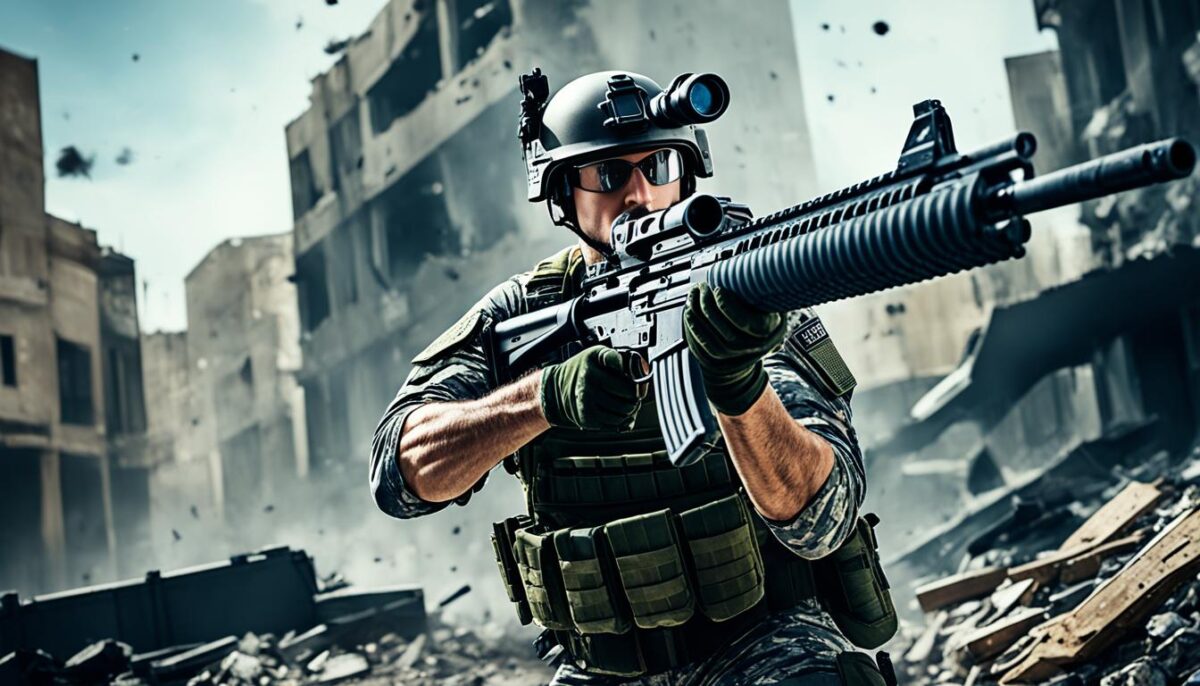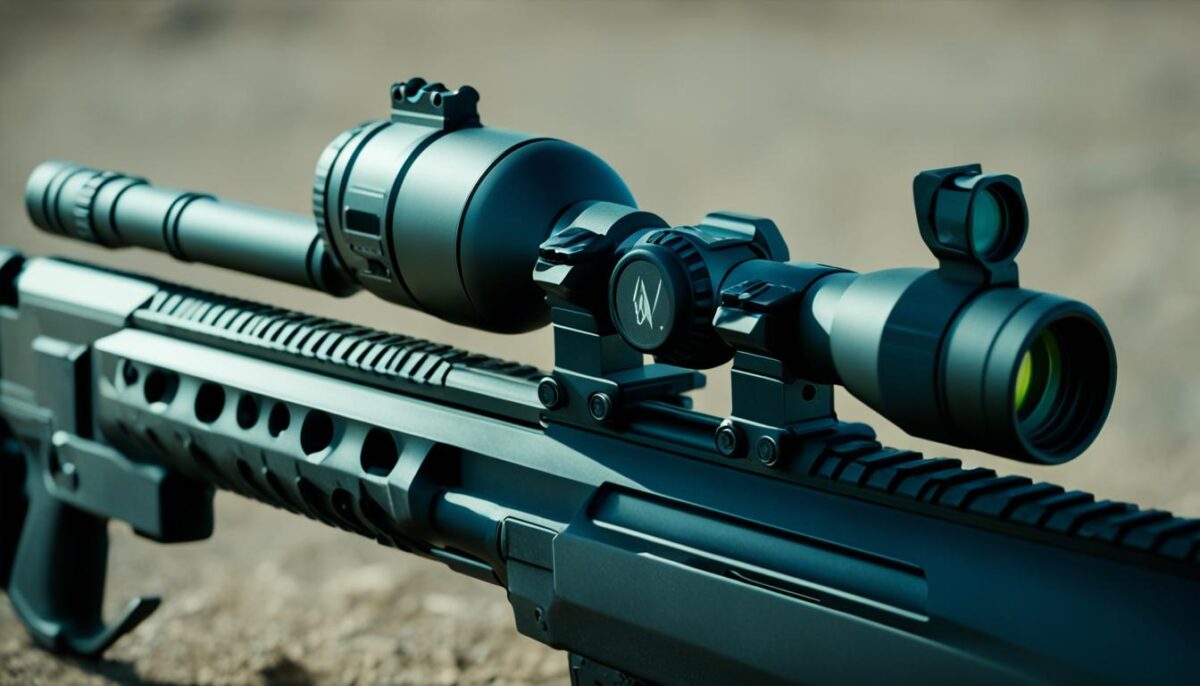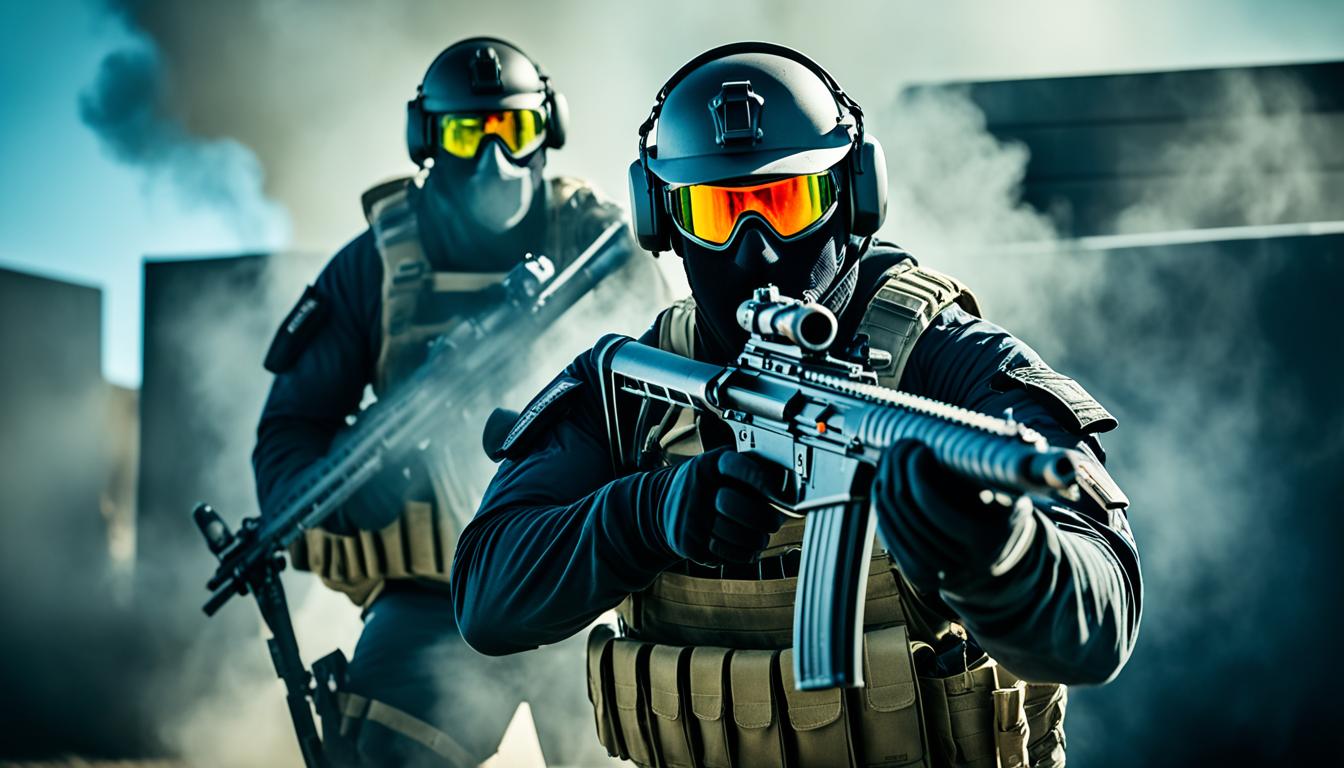Welcome to our comprehensive guide on combat shotguns! In this article, we will explore the fascinating world of combat shotguns, diving into their purpose and the vital role that training and technique play in utilizing them effectively. Whether you are a seasoned shooter or just starting out, understanding the intricacies of combat shotgun usage is essential.
Combat shotguns are powerful firearms designed for various applications, including self-defense and close-quarters combat. They are known for their versatility, reliability, and stopping power. However, wielding such a formidable weapon requires proper training and technique.
This guide will equip you with the knowledge and skills needed to handle a combat shotgun proficiently. We will cover everything from understanding the components and features of a combat shotgun to mastering essential shooting techniques and tactical deployment strategies.
Whether you are considering a combat shotgun for home defense or seeking to enhance your shooting abilities, this article will provide valuable insights and tips. So, let’s dive in and explore the world of combat shotguns, training, and technique!
Understanding the Combat Shotgun
In this section, we will explore the features and specifications of the combat shotgun, its role as a powerful firearm, and its effectiveness in self-defense situations.
Features and Specifications
The combat shotgun is a versatile and formidable weapon designed to deliver maximum impact in close-range engagements. It typically features a short barrel length, a shoulder stock for stability, and a large ammunition capacity. The gauge of the shotgun determines the size of the shells it can fire, with 12 gauge being the most common choice for combat applications.
One of the notable features of the combat shotgun is its ability to fire both shots and slugs. Shotshells contain multiple small pellets, making them ideal for close-quarters combat and engaging multiple targets simultaneously. Slugs, on the other hand, are single-projectile rounds that offer greater range and accuracy, making them effective for engaging targets at a distance.
The combat shotgun may also have various modifications and accessories for enhanced functionality. These may include extended magazine tubes, optics, picatinny rails for attaching accessories like lights or lasers, and adjustable stocks to accommodate different shooting preferences.
| Feature | Description |
|---|---|
| Short Barrel Length | Provides maneuverability in close-quarters environments. |
| Large Ammunition Capacity | Allows for multiple shots without reloading. |
| Versatility | Capable of firing both shots and slugs. |
| Modifications and Accessories | Can be customized for individual preferences and mission requirements. |
Firearm and Self-Defense Value
The combat shotgun is widely recognized as a potent firearm for self-defense purposes. Its ability to quickly and decisively incapacitate threats makes it well-suited for home defense or protecting oneself in dangerous situations.
Due to its spread pattern, shotshells fired from a combat shotgun create a wide cone of projectiles, increasing the chances of hitting a target in high-stress scenarios. This makes it an ideal choice for individuals who may not have expert marksmanship skills or encounter multiple attackers.
Additionally, the sheer sight and sound of a combat shotgun can serve as a deterrent, potentially deescalating a dangerous encounter without the need for firing a shot.
“The combat shotgun is a reliable and effective tool for self-defense. Its firepower and versatility make it a popular choice for those seeking reliable protection in close-quarters situations.” – John Smith, Firearms Expert
Whether it’s protecting your home or ensuring personal safety, the combat shotgun offers unmatched stopping power and serves as a powerful deterrent against potential threats.
Benefits of Using a Combat Shotgun
In close-quarters combat situations and home defense scenarios, having the right tool can make all the difference. The combat shotgun offers a range of benefits that make it an ideal choice for these high-stress encounters.
Stopping Power
The combat shotgun is renowned for its exceptional stopping power. With its ability to fire multiple projectiles in one shot, it delivers a significant impact on the target, incapacitating or neutralizing the threat swiftly and effectively.
Versatility
One of the key advantages of a combat shotgun is its versatility. The ability to load different types of ammunition provides adaptability in various situations. From buckshot for short-range encounters to slugs for increased accuracy at longer distances, the combat shotgun can be customized to meet specific requirements.
Intimidation Factor
The mere presence of a combat shotgun can be a powerful deterrent. Its imposing design and reputation for delivering devastating firepower can intimidate and dissuade potential intruders or attackers, often leading to the de-escalation of a potentially dangerous situation.
To showcase the advantages of using a combat shotgun, let’s take a closer look at its features, stopping power, versatility, and intimidation factor:
| Features | Stopping Power | Versatility | Intimidation Factor |
|---|---|---|---|
| Multiple projectile capacity | Significant impact on target | Variety of ammunition options | Powerful deterrent |
| Customizable accessories | Swift incapacitation | Adapts to different situations | Fear-inducing presence |
| Durable construction | Neutralizes threats effectively | Increased accuracy at longer distances |

These advantages make the combat shotgun a valuable asset for individuals concerned about home defense and close-quarters combat situations. Its stopping power, versatility, and intimidation factor combine to provide a sense of security and confidence when it matters most.
Essential Training for Combat Shotgun Use
When it comes to handling a combat shotgun effectively, proper training and mastery of shooting techniques are essential. In this section, we will cover the fundamental aspects that every shooter must focus on to maximize their combat shotgun’s potential.
1. Proper Grip
One of the primary foundations of effective shotgun shooting is maintaining a proper grip. Ensuring a firm and secure grip on the firearm enhances control and stability, leading to improved accuracy and reduced recoil impact. The grip should be firm but not so tight that it restricts finger movement.
2. Correct Stance
Adopting the right stance is critical for stability and balance while shooting a combat shotgun. The isosceles stance, where the feet are approximately shoulder-width apart and knees are slightly bent, provides an optimal base for absorbing recoil and delivering accurate shots.
3. Precise Aiming
Aiming is a crucial skill that requires both practice and patience. Identify a clear sight picture by aligning the front and rear sights, and focus on the target rather than the shotgun’s barrel. Additionally, learning how to lead moving targets is essential for success in dynamic shooting situations.
4. Shooting Drills
Regularly practicing shooting drills is key to developing muscle memory, speed, and accuracy. Incorporate various drills such as target transitions, reloads, and shooting from different positions to simulate real-world scenarios. Gradually increase the difficulty level as your skills improve.
“Proper training and mastery of shooting techniques are essential for effective combat shotgun use.”
By dedicatedly working on these key areas, you can enhance your combat shotgun proficiency and ensure a more controlled and precise shooting experience.
Continue to the next section to explore tactical deployment strategies and gain a comprehensive understanding of combat shotgun usage.
Tactics and Strategies for Combat Shotgun Deployment
When it comes to using a combat shotgun effectively, having the right tactics and strategies in place can make all the difference. Whether you find yourself in a home defense scenario or engaging in close-quarters combat, understanding how to deploy your combat shotgun strategically is crucial.
One important aspect to consider is room clearing techniques. Clearing a room effectively requires a methodical approach to ensure the safety of both yourself and your team members. It is essential to have a clear plan in mind, utilizing proper movement, angles, and cover to minimize risks. Communication within the team is key, with each member knowing their role and maintaining constant awareness.
“The success of any combat shotgun deployment relies on coordination and communication within the team. It is imperative to establish a clear line of communication to ensure everyone is on the same page and minimize the chances of friendly fire incidents.” – Sgt. Jones, Tactical Instructor
In addition to room clearing, understanding cover usage is vital for effective combat shotgun deployment. Identifying and utilizing cover properly can provide crucial protection and tactical advantage. Whether it’s a door frame, furniture, or structural features, knowing how to position yourself behind cover and make accurate shots while minimizing exposure is essential.
Here’s an example of cover usage during combat shotgun deployment:
| Cover Position | Description |
|---|---|
 |
Standing behind a solid wall, utilizing it as cover to minimize the risk of incoming fire while maintaining a clear line of sight to engage threats. |
As with any tactical situation, adaptability and the ability to think on your feet are essential. Having a variety of strategies up your sleeve allows you to adjust your approach based on the circumstances at hand. It’s important to stay calm, analyze the situation quickly, and make sound decisions.
Effective Combat Shotgun Deployment Strategies
- Establish a clear communication plan
- Practice room clearing techniques
- Identify and utilize cover strategically
- Stay adaptable and make decisions based on the situation
- Continuously train and refine your skills
By incorporating these tactics and strategies into your combat shotgun deployment, you will be better prepared to handle various scenarios effectively. Remember, practice and training are key to mastering these skills and ensuring your safety and the safety of those around you.
Maintaining and Safely Storing Your Combat Shotgun
Proper maintenance and safe storage are crucial elements in preserving the performance and safety of your combat shotgun. Regular cleaning and lubrication will ensure its optimal functionality, while responsible storage practices will prevent accidents and unauthorized access.
Maintenance
Regular maintenance is essential to keep your combat shotgun in top condition. Here are some key maintenance tasks:
- Cleaning: After every use, clean your shotgun to remove dirt, debris, and residue. Use a cleaning rod, bore brush, and solvent to clean the barrel, chamber, and action. Be sure to follow the manufacturer’s guidelines for disassembly, cleaning, and reassembly.
- Lubrication: Apply a high-quality lubricant to the moving parts of your shotgun to ensure smooth operation and prevent corrosion. Be mindful not to over-lubricate, as excess oil or grease can attract dust and dirt.
- Inspection: Regularly inspect your shotgun for any signs of wear, damage, or malfunction. Pay close attention to the firearm’s internal components, screws, and fittings. Address any issues promptly and seek professional assistance if necessary.
Safe Storage
Proper storage is crucial to prevent accidents and unauthorized access. Follow these guidelines to ensure the safe storage of your combat shotgun:
- Secure Storage Unit: Store your shotgun in a lockable gun safe or an approved firearm storage unit. This will prevent access by unauthorized individuals, such as children or burglars.
- Ammunition Separation: Store your ammunition separately from your shotgun in a locked container. This further reduces the risk of accidental discharge or misuse.
- Trigger Locks: Consider using a trigger lock or cable lock on your shotgun. These devices prevent the firearm from being fired while installed and add an extra layer of safety.
- Education and Communication: Educate and communicate with family members or others who may have access to your shotgun about firearm safety. Emphasize the importance of not handling the firearm without your permission and the need for responsible behavior around firearms.
By properly maintaining and safely storing your combat shotgun, you not only ensure its longevity and performance but also contribute to a safer environment for yourself and those around you.
Conclusion
Throughout this article, we have explored the concept of a combat shotgun and its significance in self-defense situations. We have emphasized the importance of proper training and technique to effectively utilize this powerful firearm.
By understanding the features and specifications of a combat shotgun, individuals can make informed decisions when it comes to home defense and close-quarters combat. Its stopping power, versatility, and intimidation factor make it a valuable tool in such scenarios.
However, simply owning a combat shotgun is not enough. Training is crucial to ensure safe and effective handling. Proper gripping, stance, aiming, and shooting drills are fundamental techniques that must be mastered.
Moreover, deploying a combat shotgun requires tactical knowledge and strategic thinking. Room clearing techniques, cover usage, and effective communication within a team are essential aspects to consider.
It is also vital to maintain and safely store your combat shotgun to ensure its optimal performance and longevity. Regular cleaning, lubrication, and adherence to safe storage practices will help preserve its functionality.
In conclusion, the combat shotgun is a powerful weapon that can be a game-changer in self-defense situations. However, training, technique, and a thorough understanding of its features and procedures are paramount to maximize its potential. By investing time and effort in honing these skills, individuals can effectively protect themselves and their loved ones when it matters most.

